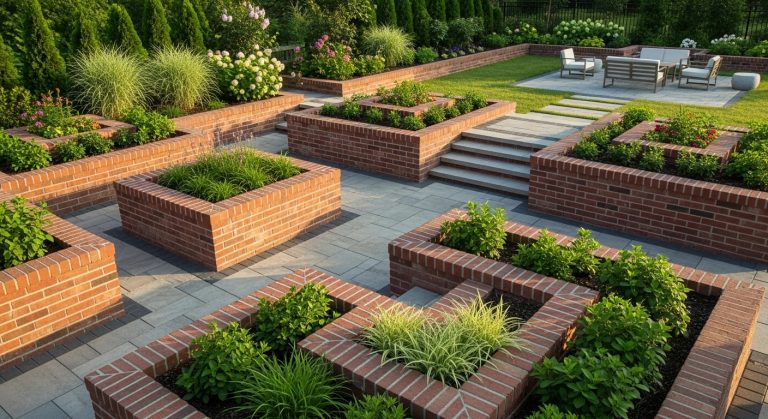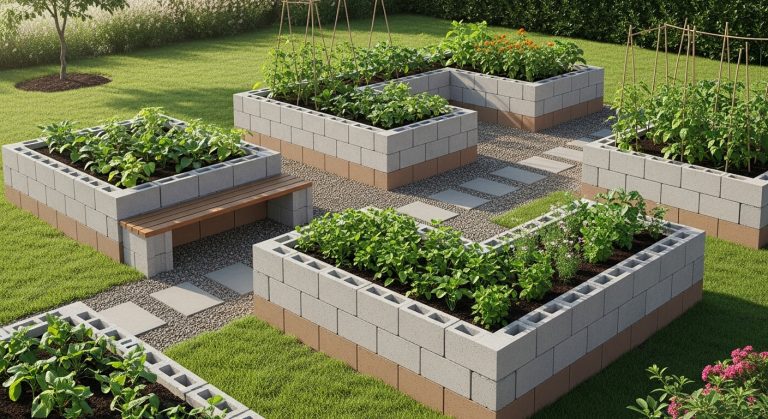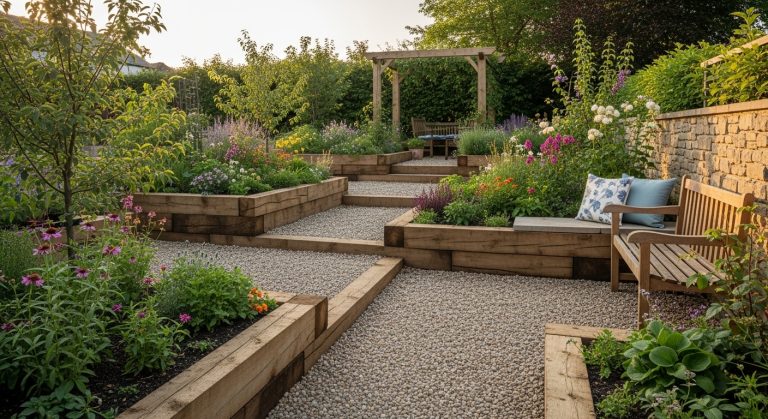Nancy Meyers Garden Inspiration | 15 Timeless Design Ideas
Ever wander through a film set and think, “Wow — I want to live in that backyard”? I know I have. What draws me in isn’t just the furniture or fancy landscaping — it’s the feeling. The kind of relaxed luxury that looks effortless but is truly intentional. That’s why I want to talk about garden design inspired by Nancy Meyers — yes, that movie-maker whose homes (and gardens) feel like characters in their own right.
When you aim for a “Nancy Meyers garden,” you’re after something that blends structure with softness: classic materials, layered planting, inviting outdoor rooms, and a palette that whispers calm. It’s become a full-blown aesthetic — and DIY gardeners are loving it.
Today I’ll walk you through 15 garden ideas, each rooted in this aesthetic — conversational, practical, and yes, I’ll throw in the occasional anecdote. Because when you’re building a garden you’ll actually use, the details matter. So grab your notebook (and maybe a coffee), and let’s plan something that’ll make your garden feel like it walked right out of a Nancy Meyers movie.
1. Seamless Indoor-Outdoor Transition
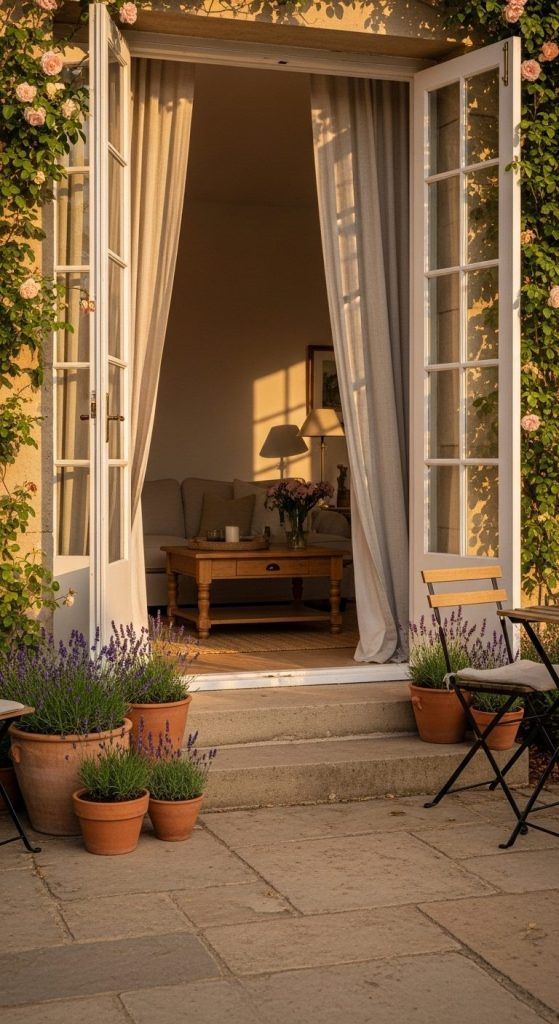
Let’s kick off with what really sets Meyers-style gardens apart: they don’t feel tacked-on. The outdoor space flows from the indoors so effortlessly you almost forget you left the living room.
Pros:
- Creates a feeling of expanded living space — your patio or terrace becomes part of your everyday home.
- Encourages you to actually use the garden for meals, reading, lounging (rather than just looking at it).
- Lets you carry design elements (color, material, furniture style) from inside out — looks cohesive and polished.
Cons:
- Might require investing in good doors/windows or patio furniture so the transition looks intentional, not sloppy.
Takeaway: When you build a garden that feels like part of the house, you’ll naturally spend more time out there — IMO that shift matters more than any plant list.
2. Soft, Neutral Palette with Warm Accents

One of the most recognizable things about a “Nancy Meyers garden” is the color story: creams, warm whites, muted tones of sage/gray, punctuated by gentle accents.
Pros:
- A neutral base gives plants and textures room to shine — you’ll notice leaves, shadows, and light more.
- Warm neutrals create a relaxed, elegant vibe — you won’t tire of it quickly.
- Accent tones (e.g., pale blues, soft greens) let you add personality without overwhelming.
Cons:
- Neutrals can look bland if you don’t layer texture or it’s overly “beige”.
- Maintenance may be higher — lighter furniture and fabrics show wear/dirt more easily.
Takeaway: Stick with a calm palette and invest in texture (woven seats, natural wood, linen cushions) to get richness without chaos.
3. Natural, Layered Materials
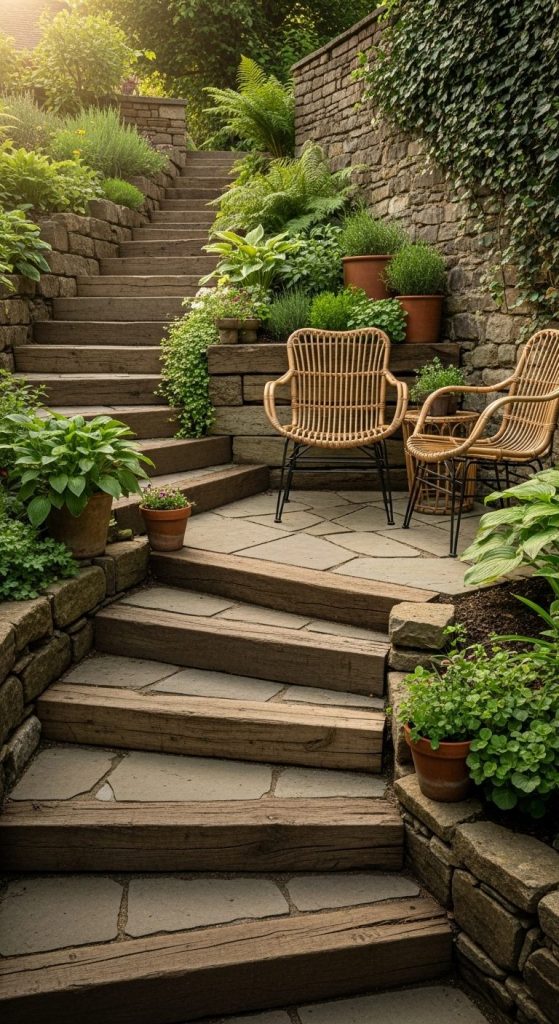
Think stone, timber, rattan, terracotta — these are the materials you’ll find in gardens with that timeless Meyers-feel. They age nicely and feel tactile.
Pros:
- Materials with texture bring richness: rough stone, woven rattan, weathered wood all invite touch and time.
- Natural palette of materials aligns with the landscape and feels integrated.
- They often age gracefully — a little patina adds character (rather than looking worn out).
Cons:
- Quality matters: cheap versions of these materials can look fake or deteriorate quickly.
- Some natural materials (like wood) require maintenance (sealing, treatment) especially in harsh weather.
Takeaway: Use materials that look and feel like they belong in nature — you’ll end up with a garden that feels settled, not staged.
4. Generous, Casual Seating Areas
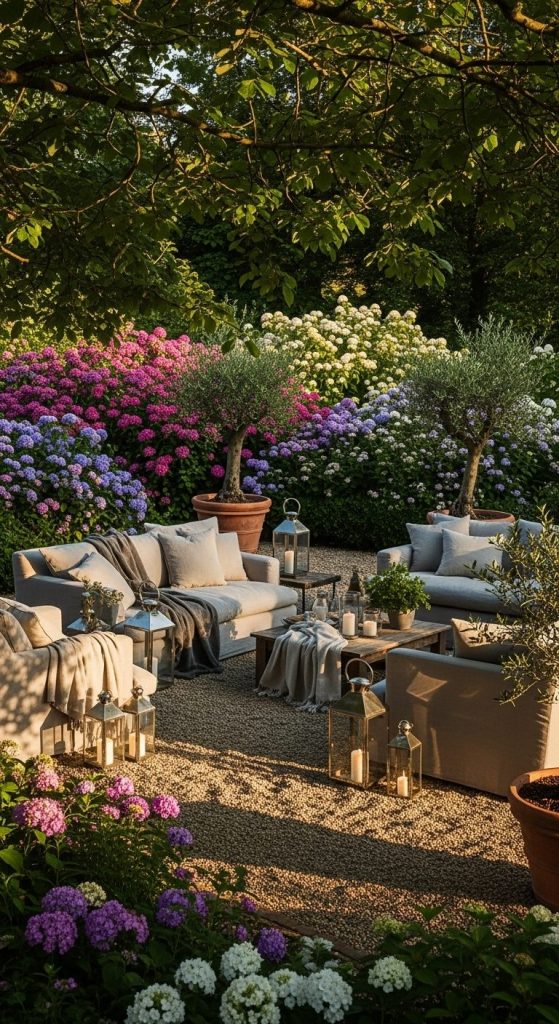
I once built a simple outdoor sofa, and the moment we sat in it with a glass of wine, the garden activated. That’s what this idea is about — making space for hanging out.
Pros:
- Seating invites gatherings, reading, à la mode lounging — you’ll use the garden more.
- When you arrange seating in clusters (not all facing the same way), it encourages conversation (and fits the film-set feel of Meyers).
- You can style it with cushions, throws, lanterns to feel cosy and lived-in.
Cons:
- Good outdoor furniture costs money — especially if you want weather-proof and comfy.
- Oversized furniture may dominate the garden and leave little room for plants or walking.
Takeaway: Make a dedicated “garden room” — even if small — and treat it like an extension of your living area.
5. Verdant Planting With Rhythm & Repetition
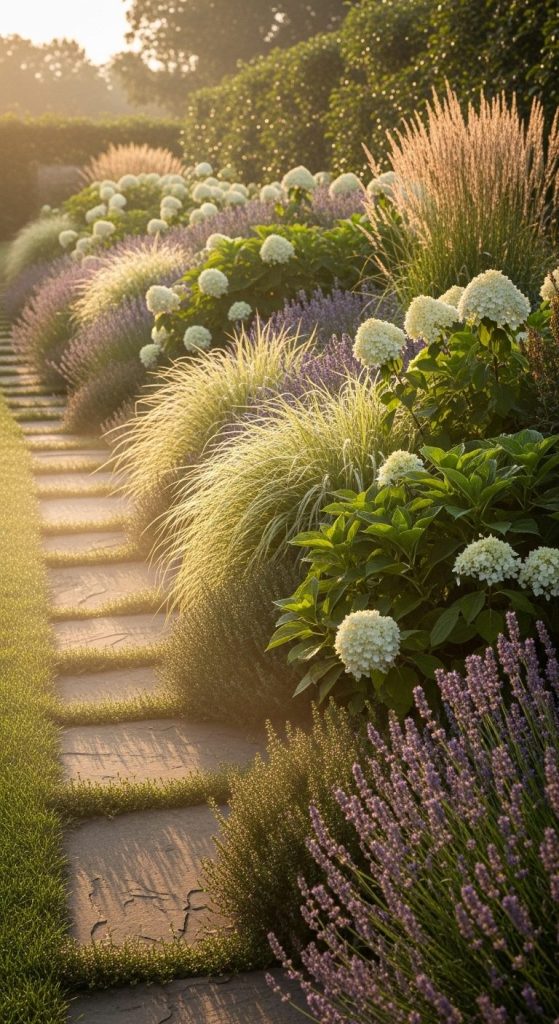
Meyers-inspired gardens always have planting that feels abundant but composed. You’ll see repetition of plant groups, rhythm along paths, and lushness that still breathes.
Pros:
- Plant groupings and rhythm create visual flow — your eye moves through the space naturally.
- Repetition helps make the planting feel intentional, not random.
- Rich planting makes the outdoor space feel immersive, almost cinematic (in keeping with Meyers’ film sets).
Cons:
- You need to consider scale and maintenance — lush doesn’t mean wild neglect.
- Some plants work beautifully in a region but may need adaptation to your climate.
Takeaway: Think in layers (groundcover, mid-height, taller shrubs) and repeat key plants to make the design feel cohesive.
6. Outdoor Dining & Fresco Moments
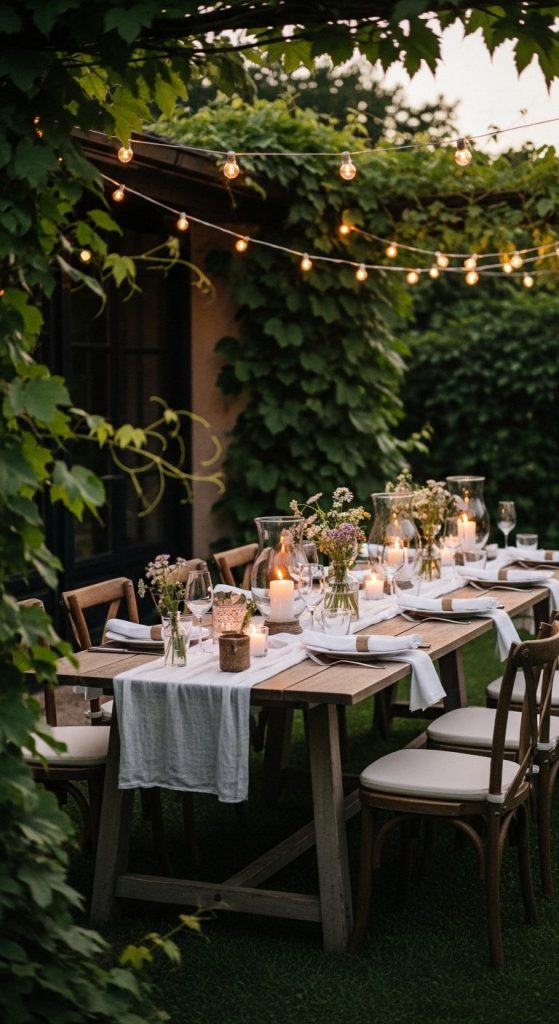
One of the signature scenes in Meyers films is a long table, casual meal outdoors, friends laughing, sun setting. Yep — your garden deserves that.
Pros:
- Dining outdoors turns your garden into a place of memory-making, not just growing things.
- It encourages you to design around the table: lighting, plant backdrop, tableware — all part of the scene.
- Evening garden dining enhances mood and extends your usable space.
Cons:
- You’ll likely need shade/cover for daytime use and maybe heating or lighting for evenings.
- Practicalities: weather, insects, furniture durability — can reduce casual use if not thought through.
Takeaway: Set up a dining spot that feels effortless yet special — when you cook outdoors and eat outdoors, the garden stops being a ‘view’ and becomes a living space.
7. Climbing Plants & Vertical Greenery

Verticality gives Meyers-style gardens depth and lushness — think vines, climbing roses, trellises, walls you want to lean on.
Pros:
- Adds dramatic texture and greenery at eye-level and above — enhances sense of enclosure without walls.
- Helps soften structures (fences, gates) and blend built/plant parts of garden.
- Naturally charming and gives a slightly “secret garden” vibe.
Cons:
- Climbers require support, training, and sometimes more maintenance (pruning, tying).
- If you choose aggressive climbers, they may damage structures or become harder to manage.
Takeaway: Don’t skip vertical planting — the “garden room” feel comes from all sides, not just what’s at ground level.
8. Soft Lighting & Evening Ambience
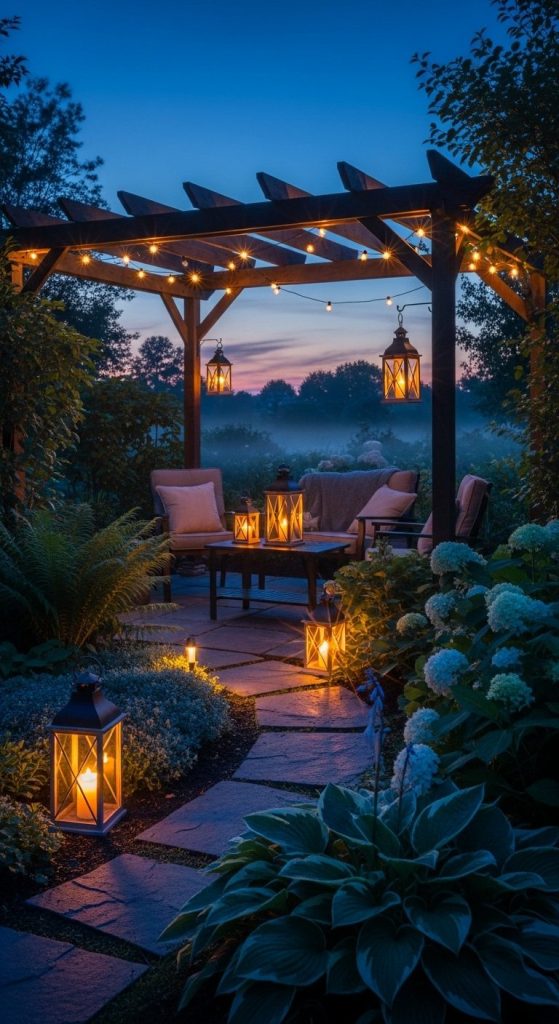
When the sun drops, I want my garden to glow, not go dark. Meyers gardens often use ambient light, lanterns, and subtle fixtures to create warmth.
Pros:
- Lighting extends garden use into evenings and makes it feel magical.
- Soft light highlights textures, shadows and plants — enhancing the mood more than bright spotlights.
- A lit garden looks inviting and lived-in (rather than sterile or unfinished).
Cons:
- Outdoor lighting installation and wiring may add cost.
- Light pollution or glare can spoil the effect if not done carefully (choose warm tones, shielded fixtures).
Takeaway: Plan for lighting early. A well-lit garden at dusk changes the experience — and that’s exactly what the Meyers vibe delivers.
9. Natural Flowing Pathways & Inviting Layout
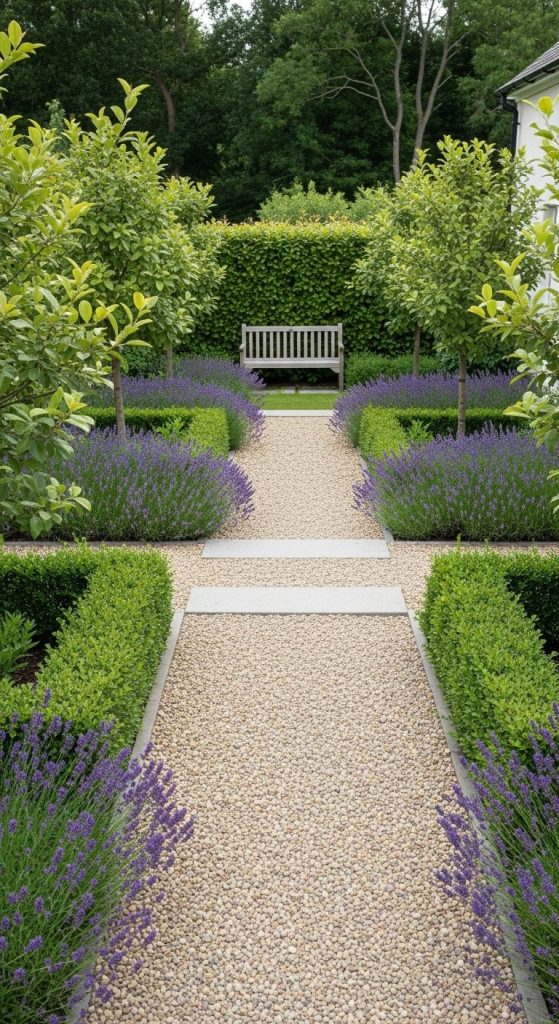
In gardens that feel like Meyers films, you don’t feel trapped; you meander, linger, turn a corner. Pathways, steps, and garden rooms make that happen.
Pros:
- Helps break the garden into zones (seating, planting, dining) yet makes it connected.
- Curving paths or subtle transitions feel more relaxed and inviting than rigid lines.
- Good flow reduces dead space and integrates different areas seamlessly.
Cons:
- Laying paths/steps properly takes time and may need professional help for drainage/levels.
- If you over-design the path, it might feel forced rather than natural.
Takeaway: Think of the garden as a journey — design how you move through it, not just how it looks from one vantage.
10. Timeless Accessories & Garden Props
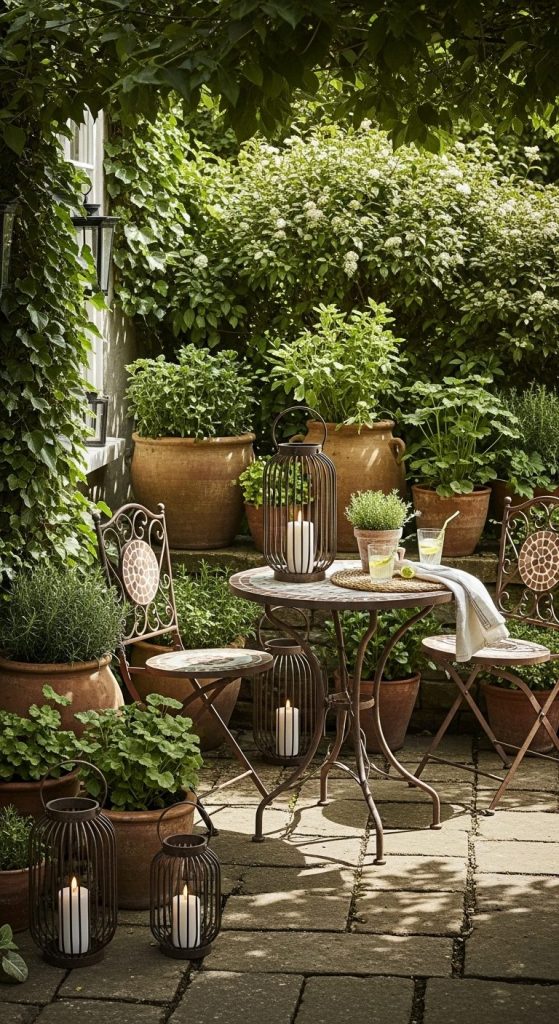
Meyers’ gardens are never cluttered with trends. They’ve got things that feel collected, timeless — classic planters, lanterns, woven baskets, vintage tables.
Pros:
- Accessories anchor the aesthetic and make the garden feel curated.
- Vintage or classic finds add character you won’t find in mass-market garden kits.
- They bridge the gap between indoors and out — making outdoor spaces feel like part of the home.
Cons:
- Accessories accumulate — you might overspend or overcrowd if you’re not selective.
- Outdoor props need durability (weather, rust, fading) so you’ll need to choose material wisely.
Takeaway: Choose fewer, better accessories that age well — they’ll ground the look and give your garden soul.
11. Seasonal Planting with Year-Round Interest
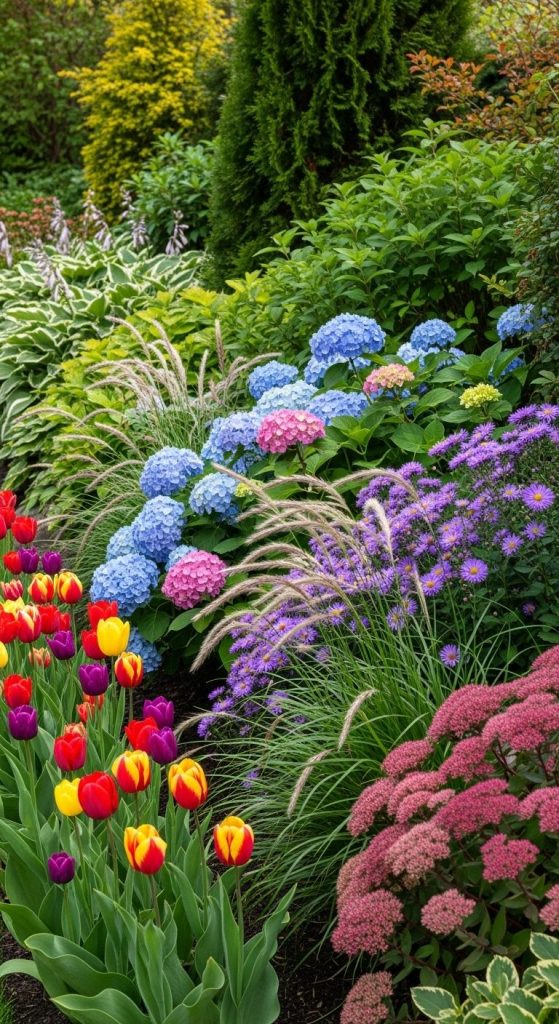
To pull off the movie-set quality, your garden can’t just look great in July. Meyers-inspired gardens show up in spring, summer, even late autumn.
Pros:
- You’ll enjoy the outdoor space more of the year — value for time and money.
- Plant variety keeps the garden dynamic, not static — you notice changes, growth, rhythm.
- It signals care and intention — plants aren’t just “picked theme” but follow seasons.
Cons:
- Requires more planning: you’ll need early bloomers, mid-season standouts, late finishers.
- Some plants may require extra work (cutbacks, prepping for winter) which means maintenance.
Takeaway: A garden that evolves is one you stay in love with — schedule plants for seasonality so your garden stays alive all year.
12. Lush Green Backdrops & Soft Foliage
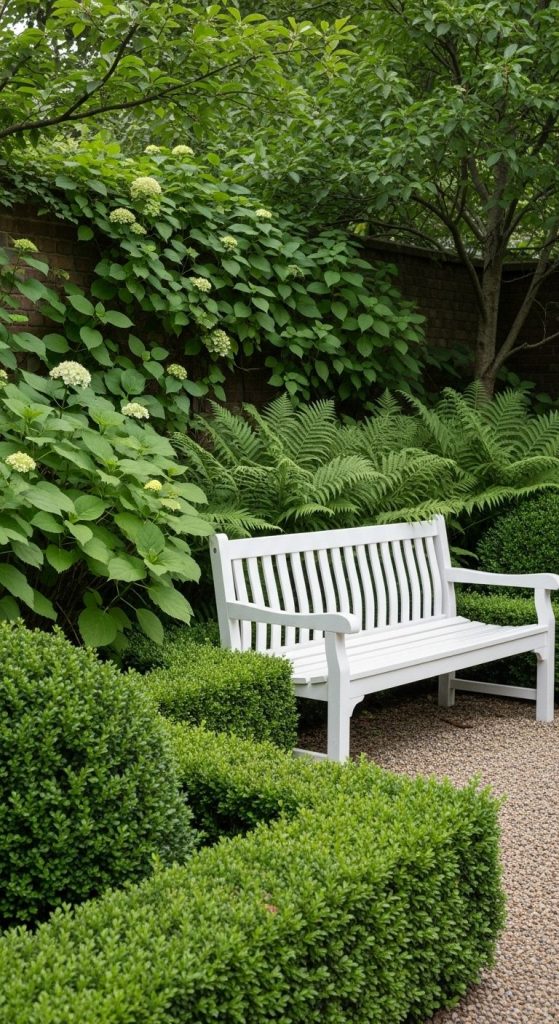
While blooms are lovely, a “Nancy Meyers garden” often relies on generous greenery: hydrangeas, box hedges, big-leaf plants, soft ferns. That lush backdrop frames everything.
Pros:
- Green foliage acts as a foundation — setting off flowers and hardscape rather than competing with them.
- Foliage textures (varied leaves, shadows) add depth and richness even when blooms fade.
- It makes the garden feel timeless and embedded in nature, not just a showpiece.
Cons:
- Big foliage plants may need space and can overshadow smaller plantings if not sized properly.
- Maintenance: trimming, shaping, clearing may be heavier depending on the species.
Takeaway: Build your garden on green first — let flowers be accents, but make the greenery the stage.
13. Artisan Hardscape & Outdoor “Rooms”
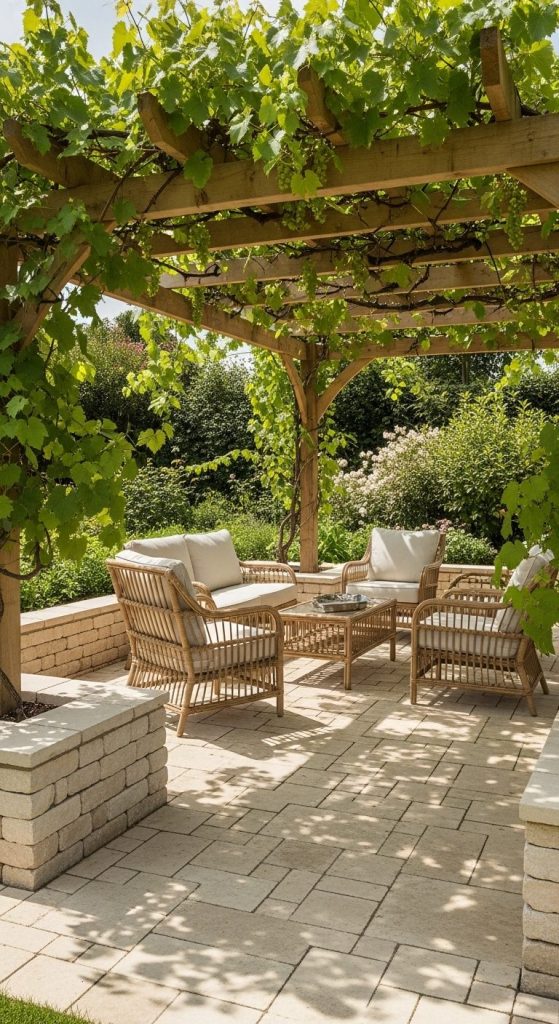
What really elevates the look is hardscape that doesn’t shout. Think simple stone paving, gravel, a pergola, gentle change in level. This is landscaping done intelligently.
Pros:
- Outdoor rooms (patio, garden room, dining terrace) feel intentional and usable.
- Good hardscape anchors the garden — gives structure so planting feels framed, not chaotic.
- Materials like limestone, aged brick or neutral pavers feel timeless and align with the Meyers aesthetic.
Cons:
- Hardscape cost and labour can be significant — it’s a foundation, not an after-thought.
- If you go too heavy on hardscape, you risk the garden feeling cold or ‘staged’.
Takeaway: Invest in good hardscape early — it’s the skeleton; plants and styling are the clothes.
14. Reflective Water Features & Calm Moments
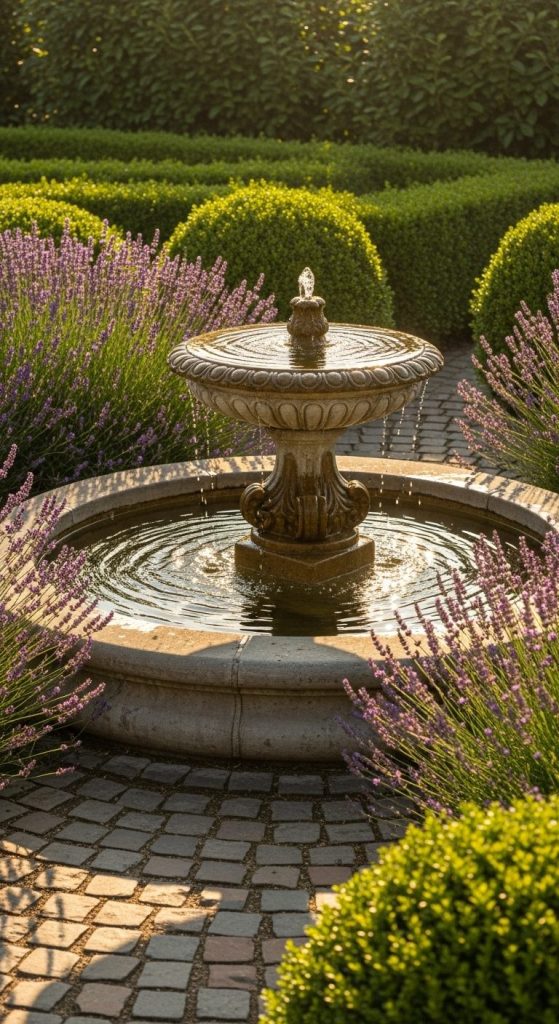
In several Meyers scenes, there’s a moment of calm—water, gentle reflection, a sense of pause. Incorporating a modest water feature adds that.
Pros:
- Water adds movement, sound, life — it shifts a garden from static to living.
- A pond, bird-bath or simple fountain becomes a focal point and invites wildlife.
- It’s an emotional anchor: you’ll go to that spot, linger, reflect.
Cons:
- Requires maintenance (cleaning, plants, maybe pump) and can attract pests if neglected.
- If large or elaborate, water features might dominate and pull focus away from planting.
Takeaway: Even a small water element can elevate a garden into something memorable — add one if you can.
15. Personal Touch & Seasonal Styling
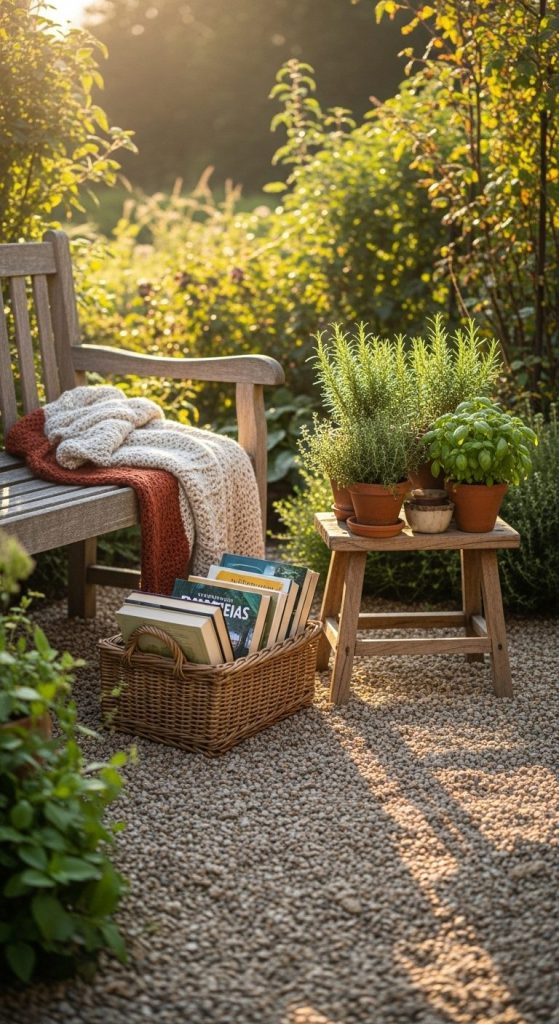
Here’s my favourite: gardens feel like “you” when they carry personal touches—books on a bench, blankets for evening wind-down, a tray of glasses, baskets of herbs. That’s the Meyers spirit.
Pros:
- Personalisation means the space becomes yours — you’ll use it, revisit it, enjoy it.
- Seasonal styling (cushions in summer, throws in autumn) keeps the garden dynamic.
- It creates photo-worthy moments (yes, Instagram-worthy) but more importantly memories.
Cons:
- Styling means you’ll need to invest time/energy each season — if garden becomes ‘too styled’, you might avoid sitting out of fear of messing it.
- Some parts may weather faster (fabrics outdoors) so you’ll need to refresh or replace items.
Takeaway: Your garden only becomes the “main character” when you add living touches. Don’t make it perfect — make it you.
Conclusion
There you have it — fifteen ideas to capture that “Nancy Meyers garden” aesthetic. What I hope you’ve picked up on is that none of these ideas is about being flashy or trendy. It’s about creating a space that feels intentional, layered, timeless — somewhere you live, not just look.
I remember sitting on a bench in my own garden on a warm evening, wind in the leaves, lantern light, a soft cushion beneath me and thinking: this is what I built it for. That moment made every hour of work worth it. Maybe you’ll have your moment too.
Pick one of these ideas—just one—to start. Maybe your focus will be on seating or maybe it’s about the pathways. Whatever it is, keep it simple, keep it you, and let the other pieces evolve. Because when you build with heart, the garden stops being a project and starts being a favourite space.
So go ahead — roll up your sleeves, plant that vine, light those lanterns, invite someone over for dinner under the stars. Your own movie-set garden awaits (and yes, it might just end up being your favourite room).

William Martin is a passionate bowler who spends most of his weekends playing the sport. With years of intense experience under his belt, William decided to share his knowledge by creating BOWLING OCEAN. Join me on this journey to explore the world of bowling and discover the tips and tricks to becoming a pro.

